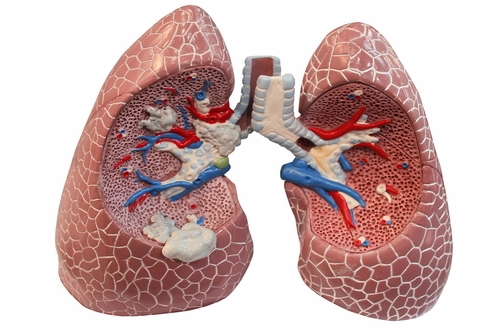Follow This Documentation Checklist for Clean Atherosclerosis Claims
Hint: You must check to see if the patient has associated angina with the atherosclerosis. When you report a code from category I25.1- (Atherosclerotic heart disease of native coronary artery), there are some specific details you should look for in the documentation. Read on to learn what steps you should take when looking at the documentation to safeguard your reimbursement. Save this handy documentation checklist and use for reference: Caution: "If the patient has native artery CAD s/p CABG, is actively taking medication, and the angina is stable, code I25.118 (Atherosclerotic heart disease of native coronary artery with other forms of angina pectoris) and Z95.1 (Presence of aortocoronary bypass graft)," says Christina Neighbors, MA, CPC, CCC, Coding Quality Auditor for Conifer Health Solutions, Coding Quality & Education Department, and member of AAPC's Certified Cardiology Coder steering committee. "This would not be coded with I25.119 (Atherosclerotic heart disease of native coronary artery with unspecified angina pectoris) because the patient has been diagnosed with a form of angina pectoris." First, make sure you are dealing with atherosclerosis of the native artery and not a bypassed artery or transplanted heart. If the documentation specifies coronary artery disease (CAD) of a native coronary artery, and the patient is not a heart transplant patient, select a code from subcategory I25.1- (Atherosclerotic heart disease of native coronary artery).
First, make sure you are dealing with atherosclerosis of the native artery and not a bypassed artery or transplanted heart. If the documentation specifies coronary artery disease (CAD) of a native coronary artery, and the patient is not a heart transplant patient, select a code from subcategory I25.1- (Atherosclerotic heart disease of native coronary artery). Then, determine whether the diagnosis is indeed chronic ischemic disease.
Then, determine whether the diagnosis is indeed chronic ischemic disease. Next, note whether the patient has associated angina. If the patient does have associated angina, is it unstable or stable? If the patient does have CAD with angina, you must confirm within the note that everything being coded is properly supported by the documentation, says Mari Robinson, CPC, CPMA, CRC, CCC, compliance analyst of chronic conditions at Riverside Medical Group in Newport News, Virginia. "It is so easy for a provider to be thinking something and not document it because it is a "normal course of medical decision-making" for them," Robinson adds. "When in doubt, query the provider."
Next, note whether the patient has associated angina. If the patient does have associated angina, is it unstable or stable? If the patient does have CAD with angina, you must confirm within the note that everything being coded is properly supported by the documentation, says Mari Robinson, CPC, CPMA, CRC, CCC, compliance analyst of chronic conditions at Riverside Medical Group in Newport News, Virginia. "It is so easy for a provider to be thinking something and not document it because it is a "normal course of medical decision-making" for them," Robinson adds. "When in doubt, query the provider." After reviewing for angina, check for a documented spasm. If the patient has atherosclerotic heart disease of the native coronary artery with angina pectoris with documented spasm, you would report I25.111 (Atherosclerotic heart disease of native coronary artery with angina pectoris with documented spasm).
After reviewing for angina, check for a documented spasm. If the patient has atherosclerotic heart disease of the native coronary artery with angina pectoris with documented spasm, you would report I25.111 (Atherosclerotic heart disease of native coronary artery with angina pectoris with documented spasm). Next, review the documentation and note if the patient has a history of previous surgery (Z95.1) and if so, review to see if the atherosclerosis is the disease process in a native artery or one of the arteries that has been bypassed. This is important because your ICD-10 choices are different if the patient has atherosclerosis of the native coronary arteries (I25.1-) versus previous bypass grafts I25.70- (Atherosclerosis of coronary artery bypass graft(s), unspecified, with angina pectoris) through I25.73- (Atherosclerosis of nonautologous biological coronary artery bypass graft(s) with angina pectoris) and I25.79- (Atherosclerosis of other coronary artery bypass graft(s) with angina pectoris) through I25.810 (Atherosclerosis of coronary artery bypass graft(s) without angina pectoris) or both.
Next, review the documentation and note if the patient has a history of previous surgery (Z95.1) and if so, review to see if the atherosclerosis is the disease process in a native artery or one of the arteries that has been bypassed. This is important because your ICD-10 choices are different if the patient has atherosclerosis of the native coronary arteries (I25.1-) versus previous bypass grafts I25.70- (Atherosclerosis of coronary artery bypass graft(s), unspecified, with angina pectoris) through I25.73- (Atherosclerosis of nonautologous biological coronary artery bypass graft(s) with angina pectoris) and I25.79- (Atherosclerosis of other coronary artery bypass graft(s) with angina pectoris) through I25.810 (Atherosclerosis of coronary artery bypass graft(s) without angina pectoris) or both. Finally, make sure you verify that the atherosclerosis is of the artery of the heart and not the arteries of the extremities, because in that case, you would look to a code from category I70.20- (Unspecified atherosclerosis of native arteries of extremities) through I70.79- (Other atherosclerosis of other type of bypass graft(s) of the extremities).
Finally, make sure you verify that the atherosclerosis is of the artery of the heart and not the arteries of the extremities, because in that case, you would look to a code from category I70.20- (Unspecified atherosclerosis of native arteries of extremities) through I70.79- (Other atherosclerosis of other type of bypass graft(s) of the extremities).




